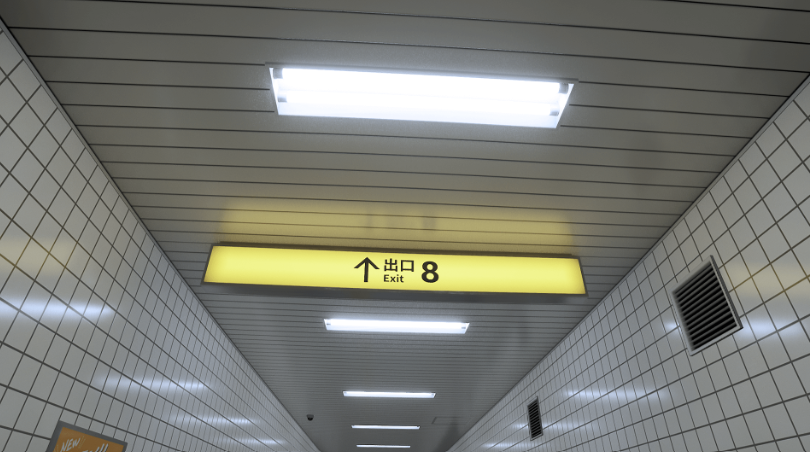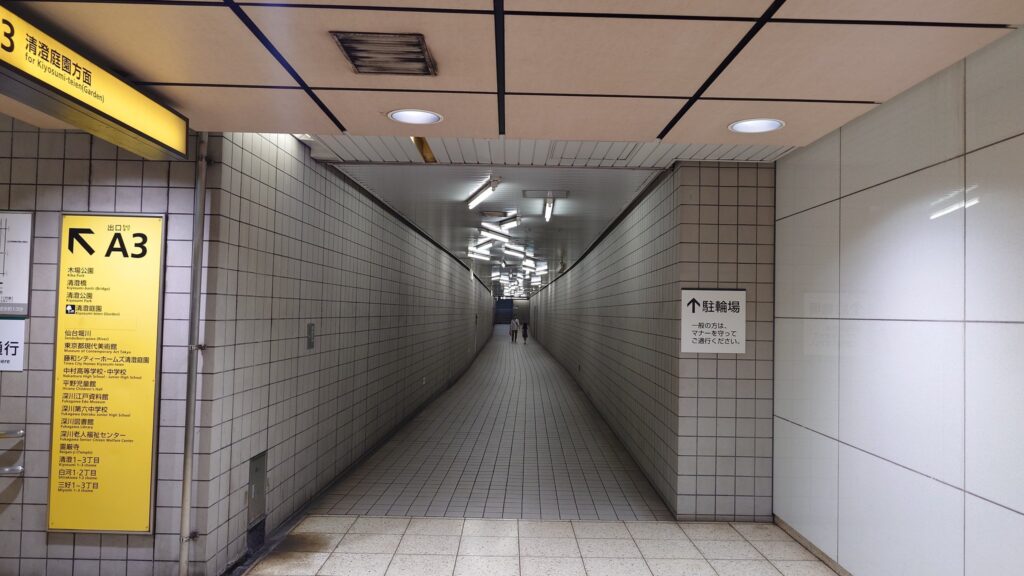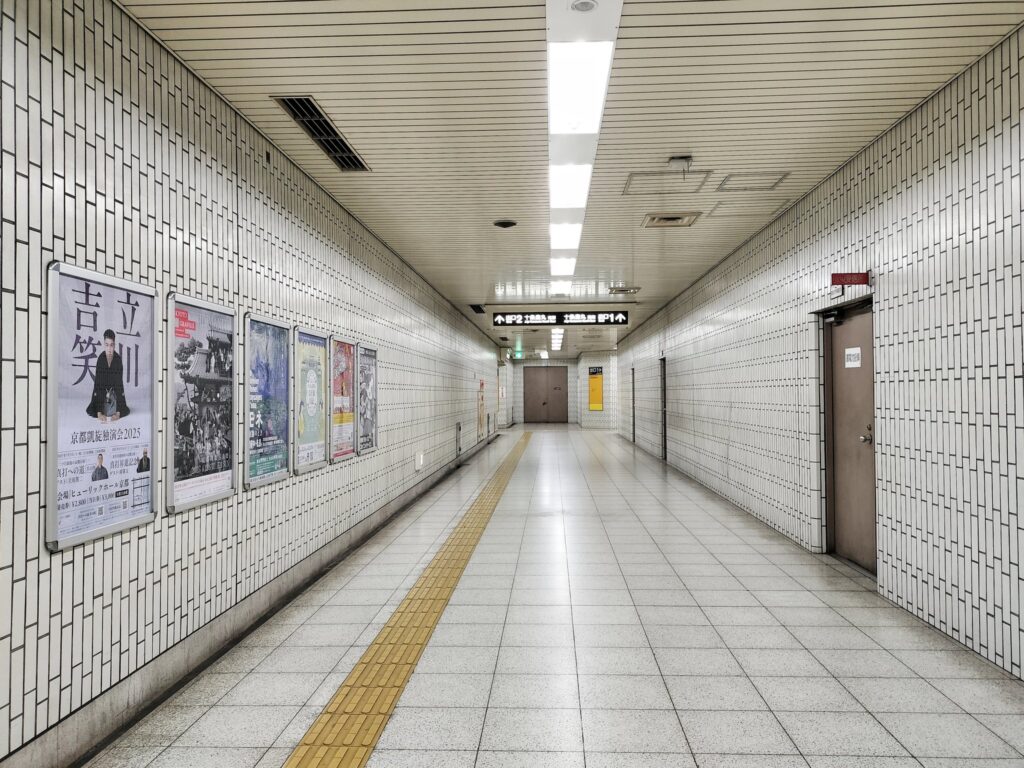
What Is The Exit 8?
The Exit 8 is a short Japanese horror escape game that quickly went viral thanks to its surreal visuals and simple but unsettling gameplay. Inspired by liminal spaces and the eerie “backrooms” concept, the game traps players in an endlessly looping underground corridor that looks almost photorealistic—thanks to the power of Unreal Engine.
Set in a mundane Japanese subway passage, players must walk forward and watch for subtle “anomalies” in the environment. Spot the anomaly, turn back. No anomaly? Keep walking. That’s it—but the tension builds with every loop.
The uncanny realism of the setting has left many players wondering: Is this a real place? And if so, which station inspired it?
The Real-Life Inspiration: Is There a “Model Station”?
While many gamers have speculated about which real-life station served as the model, the game’s developer has chosen not to disclose any specific location. In interviews, they mentioned wanting to keep the setting ambiguous, enhancing the game’s universal eeriness.
However, fans have noticed strong visual similarities with several actual subway stations in Japan.
Kiyosumi-shirakawa Station: The Clearest Link?
One of the game’s most iconic anomalies features fluorescent lights arranged in an uneven, seemingly random pattern. This caught the attention of Japanese players—because a real Tokyo station has this exact feature.
That station is Kiyosumi-shirakawa Station, located in eastern Tokyo. The corridor lighting there is part of a public art installation aimed at creating a calming atmosphere. Still, many visitors say the dim corridor and strange lights feel eerily similar to the game.
In fact, the game’s developer has confirmed that while the main hallway is modeled after a different location, this specific anomaly was directly inspired by Kiyosumi-shirakawa.
Some fans have even joked online that the station feels haunted in real life, reinforcing the game’s unsettling vibe.

Jūjō Station in Kyoto: Another Possible Inspiration?
Another theory points to Jūjō Station on the Kyoto Municipal Subway’s Karasuma Line. Online comparisons highlight similar layout elements—such as posters, door placement, and tactile paving tiles (used to guide visually impaired passengers).
Despite the resemblance, there’s no official confirmation that this station served as a model. The similarity may be purely coincidental, especially since many Japanese underground passages share similar designs.

Why the Mystery Matters
The genius of The Exit 8 lies in how familiar—and yet subtly wrong—its world feels. Many Japanese subway stations share common architectural features, so players may feel as though they’ve passed through that same corridor before. It’s this everyday realism that gives the game its psychological horror edge.
Next time you’re in a Japanese subway, you might catch yourself scanning for anomalies—just in case.
Want to Visit These Locations?
- Kiyosumi-shirakawa Station (Tokyo): Easily accessible via the Tokyo Metro Hanzomon Line or Toei Ōedo Line.
- Jūjō Station (Kyoto): Located on the Karasuma Line, a short ride from Kyoto Station.
While these may not be official models, visiting them adds a fun and spooky twist to any urban exploration adventure in Japan.and tunnels with restricted access.
Alcoholic beverage Anime April Architecture August Autumn Building Capital Area Cherry blossom February Flower Izakaya Japanese food July Kinki kyoto Local ramen Manga March Nagoya Nature Nightlife Night view October Osaka Photogenic Pink Red Sakura September Shopping Shrine Souvenir Spring Station Summer Superb view Temple Tips Tohoku Tokai Tokyo Torii White Winter







